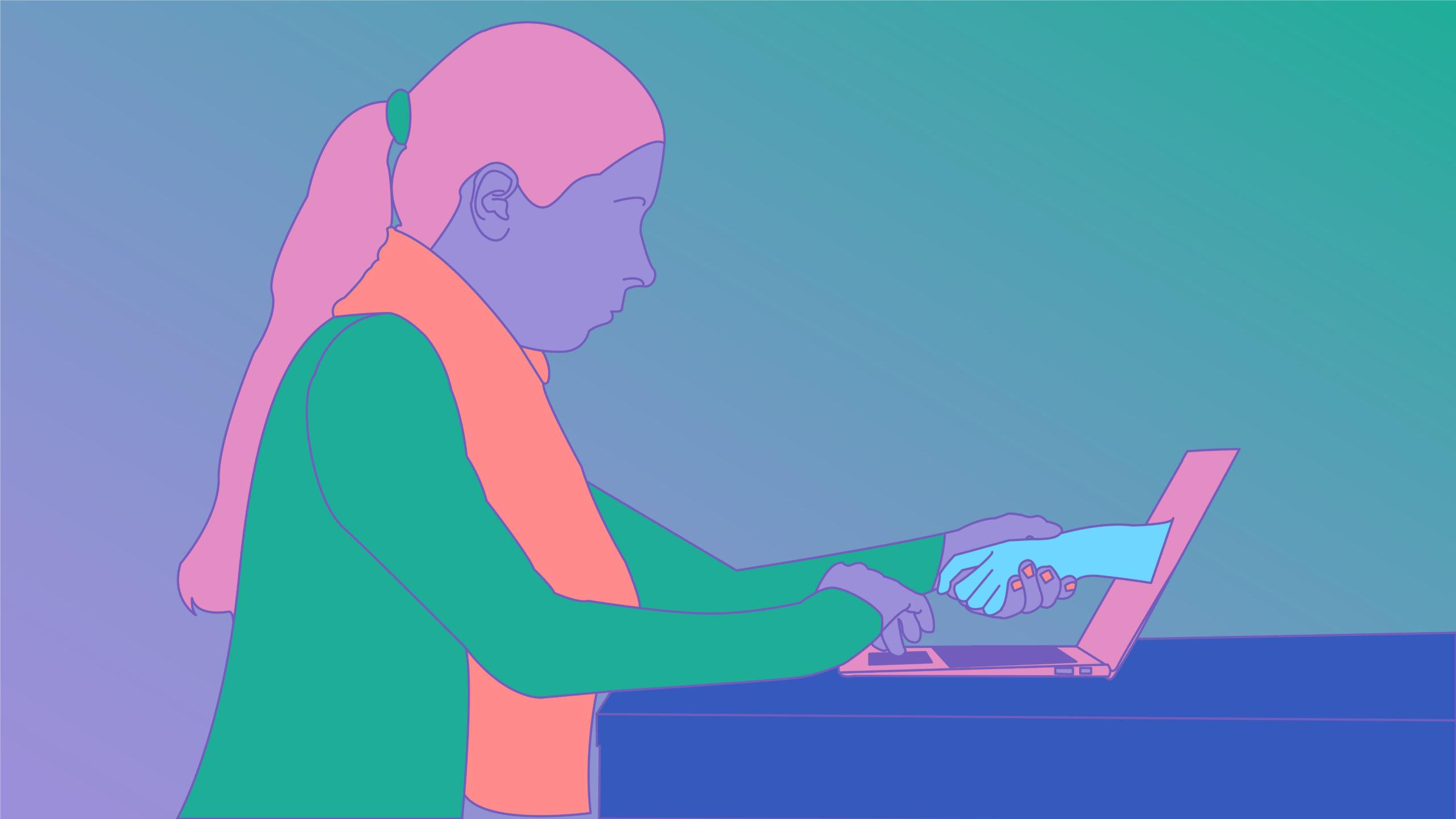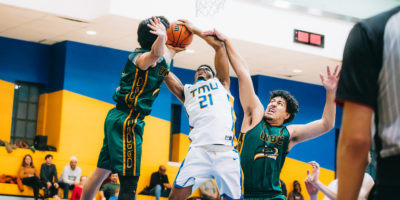When you need an alternative to traditional therapy, you can go online. Students are finding community on the internet when they couldn’t find support elsewhere
Young people between the ages of 15 to 24 are more likely to experience mental illness than any other age group, according to statistics from the Centre for Addiction and Mental Health. At the University of Toronto, there have been three student deaths in the past two years, sparking a conversation about the need for more accessible mental health resources on campuses, The Varsity reported at the end of September.
Like any publication, at The Eyeopener, we cover mental health as often and as inclusively as we can, but we can always do more. That’s why we’ve launched an online package comprised of three feature stories where we talk to Ryerson students about less obvious aspects of mental wellbeing that affect them in their daily lives.
Read other stories from our package: Why we’re talking about mental health in-depth this week, how internships take a toll on student mental health and why students are in need of identity-specific counselling.
CONTENT WARNING: This article discusses mental health crises, suicidal thoughts, sexual assault and a potentially triggering account of self harm.
This article discusses dealing with ongoing mental health issues. For immediate help or if you are in crisis, call the Good2Talk Post-Secondary Student Helpline at 1-866-925-5454 or Telehealth Ontario at 1-866-797-0000.
Words by Dhriti Gupta
A lly Barati* never asked for mental health support until she was in Grade 12. She couldn’t work or eat, and her entire body was sore. Her parents didn’t know what was going on with her and were frustrated that she couldn’t get out of bed. Burdened with suicidal ideation and undiagnosed depression, she found herself alone each night, left to reckon with overwhelming mental and physical pain.
Three months later, she finally mustered up the strength to visit a guidance counsellor at her high school. The counsellor recommended a youth centre with free walk-in services, but Barati was not guaranteed a session or a consistent counsellor. Waiting was not an option in her condition and a social worker who was a close family friend recommended a few places where she could try private therapy. They wanted her to come in twice a week if possible, but each session cost upward of $200, so the most she could afford at the time was once a week. After a month of weekly sessions, she tried to cut it down to one appointment every other week.
Barati also decided to create a private Instagram account to bridge the gap between her therapy sessions. Searching mental health related hashtags, she slowly built a community of peers who were struggling with the same issues. While she didn’t know any of the people she met through the account in real life, she found relief in the small gestures of support. When she would post random pictures from her camera roll with captions detailing her current struggles and emotions, the comments and direct messages started rolling in. People would reach out to tell her that they felt the exact same way.
Now a third-year retail management student at Ryerson, Barati still has the account but hasn’t used it in months. Barati now has a good relationship with her therapist, however she finds sharing only about her life can make it too one-sided. This is when she appreciates the mutual support aspect of using online resources. Since she found her online community, she’s felt less alone.
While navigating mental health issues, licensed professionals are often recommended by experts, but therapists are often inaccessible. Whether it be due to financial restrictions, unique situations or therapy not resonating with someone, traditional therapy isn’t always enough.
For students, on-campus resources often come with an added barrier. At Ryerson, some students have had to wait several months to gain access to counselling services on campus. As a result, some students who encounter gaps in professional treatment have turned to the internet to find support in online communities.
Allison Dunning is the program manager for Bean Bag Chat, a free counselling app created by Stella’s Place, a youth mental health centre in Toronto. She says in co-designing their services with potential users, they found there was a large demand for flexible, online peer support. They also found an online service had the benefits of avoiding the long wait times and costs associated with in-person resources.
“The reason that young adults tend to find peer support appealing is because they’re speaking with somebody who is speaking to them from a very similar level,” Dunning says. “They want people who have lived experiences.”
Barati also found the component of providing support to others important in holding herself accountable. It reminded her to take her own advice. “Being able to give it to someone else sort of made me stop and think about it, like maybe I should be doing this if I’m telling other people to do it too.”
W hen Vanessa Amin** was 12, she was diagnosed with generalized anxiety, secondary depression and obsessive compulsive disorder (OCD). After three years of therapy, she felt independent enough to manage her mental health issues without regular sessions. When things got rough again, she’d look into her condition online and search for non-medicinal techniques and strategies.
The Eyeopener spoke to the second-year Ryerson student via text message due to her health complications. She said her situation worsened when she suddenly developed a chronic health condition a year after stopping therapy. While it isn’t fatal, the condition involves chronic pain that never really goes away. She’d wake up in pain, go out with friends in pain, go to class in pain. It was ever-present. On a normal day, the pain was like construction happening outside her house—she learned to ignore it after a while, but other days, it was unbearable.
The combination of physical pain, her mental health issues and the social stigma of her illness made for an overwhelming combination. “In these moments of higher pain, [my mental health tends] to drop. It reminds me a lot of when I first got diagnosed with the condition, and all the feelings tied with it,” she said.
As Amin’s health worsened, online resources became more and more important. Her family didn’t understand where she was coming from. Kids at her school would make fun of her, mocking her pain. Amin didn’t feel like a therapist could grasp the experience of her mental health issues overlapping with her chronic condition and was reluctant to risk trying therapy for that reason.
“I’ve gone through that situation way too many times where people just don’t get it.”
Now Amin still doesn’t feel the need to seek further professional help. As obstacles come up in her mental and physical health, she continues to use online resources to stay educated and remind herself that there are others who struggle with the same issues.
Lina Mansana conducted her doctoral research on the experience and management of chronic illness. She wrote in a 2017 research article that seeking help through online communities, self-help groups and blogs is becoming an “important source of moral, emotional, and social support” for affected individuals. People who share their common experiences and “even those who limit themselves to navigating without participating may also feel helped by reading others’ illness accounts.”
For students, on-campus resources often come with an added barrier.
When Amin felt isolated and depressed, she would read the blogs written by others with her condition. While she wouldn’t often participate in forums, seeing other people with the same complications live their lives freely was enough to ease her through the difficult moments. “It sounds really weird, but reading someone else’s hardships makes me feel a little less sad about my own, because I know someone is going through the same annoyances as me.”
But there are also risks associated with participating from the sidelines. Mansana points out that “just reading can also turn into a depressing, frightening, or anxiety-provoking experience” for some people with chronic illness.
Amin says she chooses not to read about others’ hardships when she’s feeling stable. “I won’t read them when I’m not upset about the condition, because I feel like that’s not a good mindset to permanently be in.”
S iobhan Liu had just bombed an important chemistry midterm in the winter 2019 semester when she chose to try BetterHelp, an app with 24/7 mental health support promoted by YouTubers and social media influencers with referral codes.
The fourth-year chemistry student was diagnosed with depression at 16 and had already gone through the traditional intake process: wait times, referrals, diagnoses and finally six months of ongoing cognitive behavioural therapy sessions, a type of therapy that focuses on thought patterns. She was then prescribed a “concoction” of meds, but she found it wasn’t helping.
Liu had to find her own ways to cope outside of clinical therapy. “Turns out it’s not really for me,” she remembers thinking. She ended up joining several groups on campus, participating in a video game community and filling up her schedule so she wouldn’t think about her mental health.
But at 3 a.m., the day after she messed up on her midterm, Liu decided to give BetterHelp a try. When she logged in, she was prompted to sign up for a payment plan and chose one of 20 different kinds of licensed therapists, meant to suit her conditions and needs. The session she chose was 30 minutes long and cost $60 USD with a student discount. This was the cheapest option, allowing it to be covered by her insurance.
After about 15 minutes of texting with a depression and anxiety counsellor, she could tell the conversation wasn’t going anywhere. Exhausted and disappointed, Liu went to bed. The next morning, she went on the app again, seeing if she could learn anything from re-reading the conversation from last night. Still, she found the advice bland and generic. “It was more like manufactured therapy in a sense—it wasn’t really specific toward [my] needs,” she says.
An Australian study on mental health apps found they are generally well suited to the needs of young adults. But through the analysis of 27 different mental health apps, they found that many didn’t follow evidence-based guidelines for self-help. However, the study recognized the importance such apps play in reducing the barriers of “future of mental health care, making mental health care more accessible.”
A suggestion from the study included using transdiagnostic cognitive behavioural therapy (TCBT) strategies. Currently, mental health apps mainly focus on treating a specific mental health issue, but TCBT is an approach that focuses on common symptoms of various mental health illnesses.
“I kept coming back to it day after day when things were hard and I would read it again and again”
Although Liu had tried BetterHelp to avoid a breakdown before exam season, that’s what ended up happening. After the midterm, her issues snowballed. She encountered problems with her landlord, did poorly on other midterms and forgot about a 70-page lab report until the day before it was due.
Her TA and chemistry professor ended up being supportive in her situation. She emailed her TA about the lab report and how she had been struggling lately, and he granted her an extension. And when she burst into tears in her professor’s office, he offered to take her down to Ryerson’s counselling centre. “Not many people are as privileged as me that they have a prof who’s ready to walk you down there and get you help.”
T hese days, Barati has a strong and trusting relationship with her therapist. She now regularly seeks online communities for mental health, whether it be YouTube channels or the Facebook post-traumatic stress disorder support group she’s part of.
She had been doing better with her mental health until a few months ago when she was sexually assaulted. While she had developed strong support systems with her therapist and others in her life, trauma from the incident led to sleepless nights full of flashbacks.
When they were particularly bad one night, it was around 4 a.m. when Barati was dealing with old thoughts about self-harm. She couldn’t find support neither in her house because everyone was sleeping, nor call her therapist.
Finally, she went on Google, searching for resources for sexual assault surviors. She came across an online hotline from RAINN, an anti-sexual violence non-profit. The service allows users to message trained counsellors one-on-one. In order to access the services, she was put on a waitlist until a counsellor became available.
In the meantime, Barati and several other survivors from all across North America were put in a chatroom to speak to each other. The conversations she had with the other individuals in the chat were invaluable. Exchanging words of support with other survivors distracted her from the flashbacks until she was no longer in crisis. “I was able to sort of ground myself and come back.”
One of the messages a woman sent resonated with Barati so deeply that she screenshotted it. “The world needs more people like you. Don’t underestimate the power of your words,” part of the screenshot reads.
“I kept coming back to it day after day when things were hard and I would read it again and again,” Barati says.
The long wait time made Barati give up on speaking to a counsellor that night. But after chatting with other survivors for around 40 minutes, she found the support she was looking for through community and she was calm enough to use a meditation app and fall asleep.
*Surname has been changed
**Full name has been changed











Leave a Reply